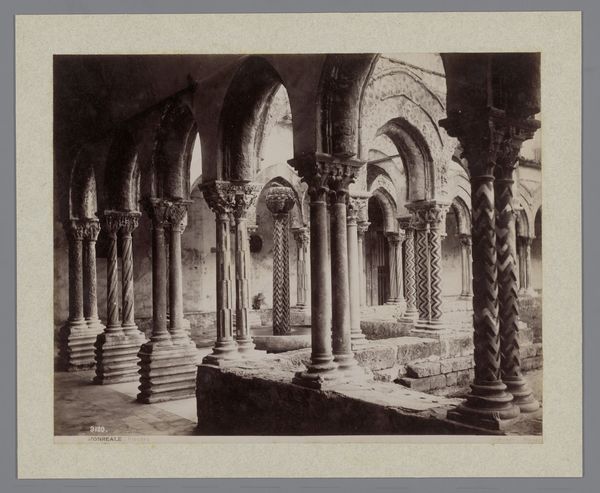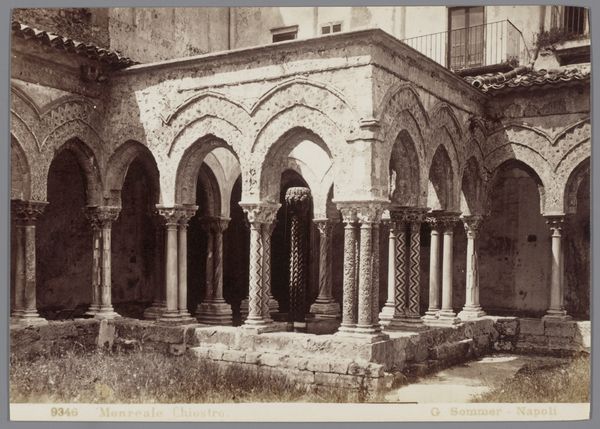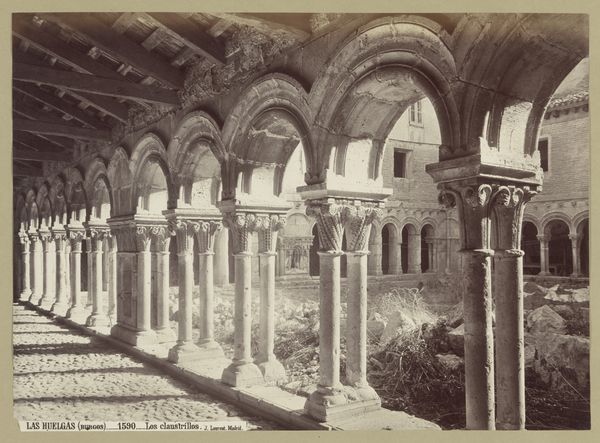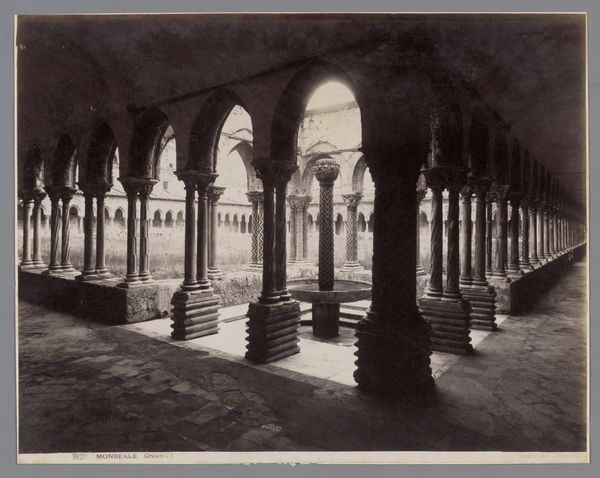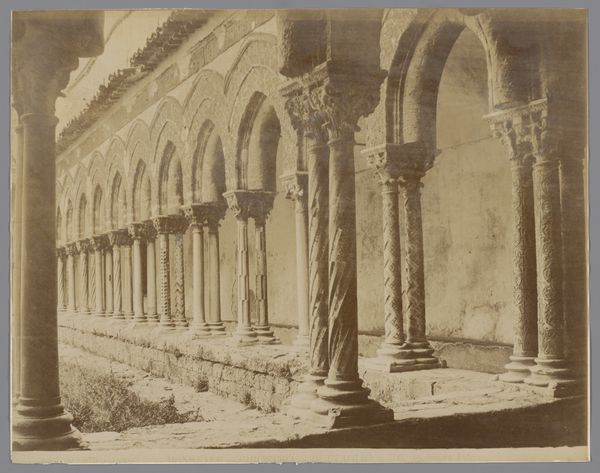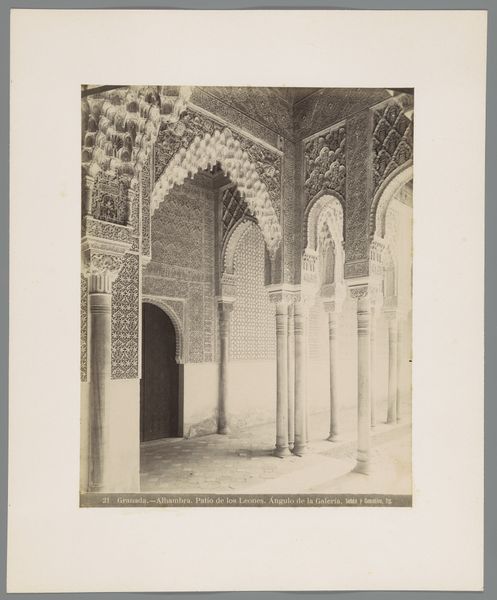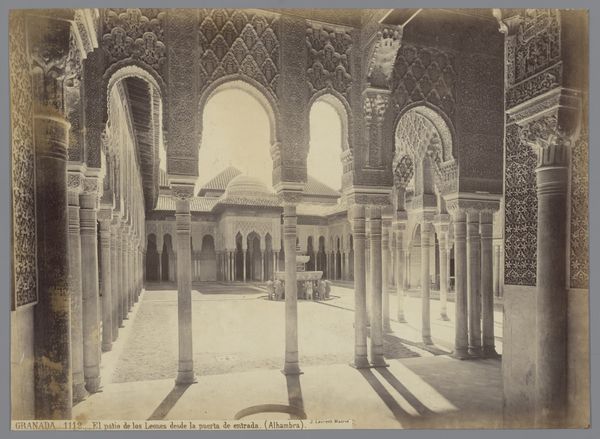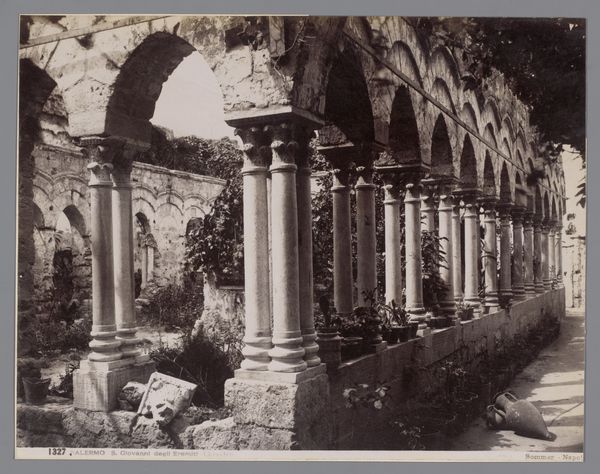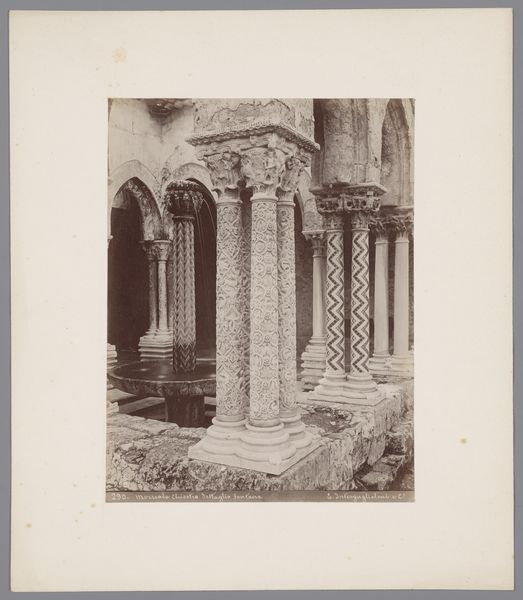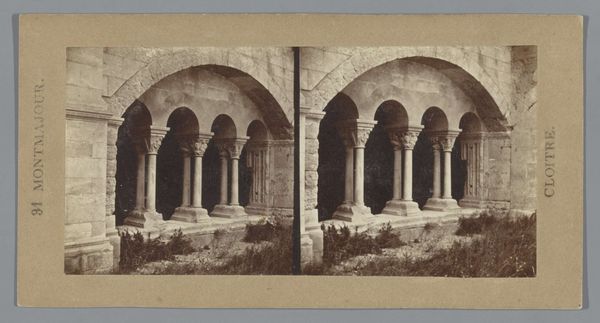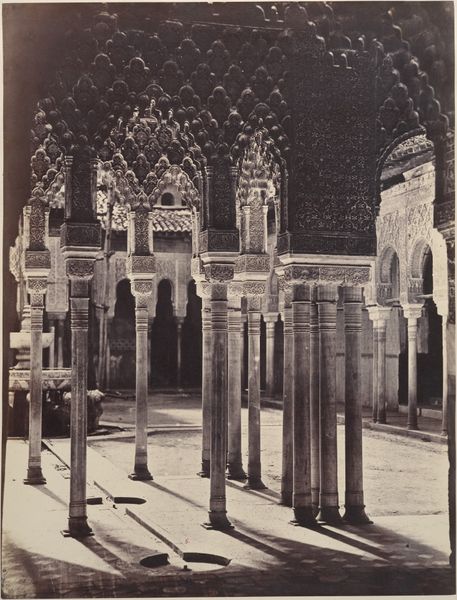
photography, architecture
#
sculpture
#
landscape
#
photography
#
geometric
#
ancient-mediterranean
#
architecture
#
realism
#
statue
Dimensions: height 197 mm, width 249 mm, height 198 mm, width 251 mm
Copyright: Rijks Museum: Open Domain
Editor: Here we have Giorgio Sommer's photograph, "Kloostergang in het benedictijnerklooster van Monreale," dating somewhere between 1857 and 1914. The intricate geometric patterns on the columns really draw my eye. How would you approach analyzing this photograph from a formalist perspective? Curator: Indeed. The photograph offers a compelling study in architectural geometry. Consider the repetition of the arches. Notice how each frames the space beyond, creating a rhythm that leads the eye deeper into the structure. The interplay of light and shadow is equally important. Editor: So you're looking at the shapes and light more than, say, the function of the space? Curator: Precisely. Let's consider the texture. The rough, aged stone contrasts with the smooth, polished columns. This juxtaposition highlights the material qualities and inherent structure. Can you see the subtle variations in tone across the photograph? Editor: Yes, now that you mention it, the different greys really emphasize the form of the arches and the depth of the cloister. It almost creates another layer of pattern on top of the physical one. Curator: The photographer has structured space with light and dark, with geometry, creating rhythm and a tangible sense of depth using strictly photographic elements. We are not invited into any reading of what that architecture meant or did, only with how the photographer understood form. Editor: I see it now. Looking at the photo as an object in itself allows for a different kind of understanding. Curator: Precisely. We extract inherent qualities for an alternative understanding beyond any context.
Comments
No comments
Be the first to comment and join the conversation on the ultimate creative platform.
